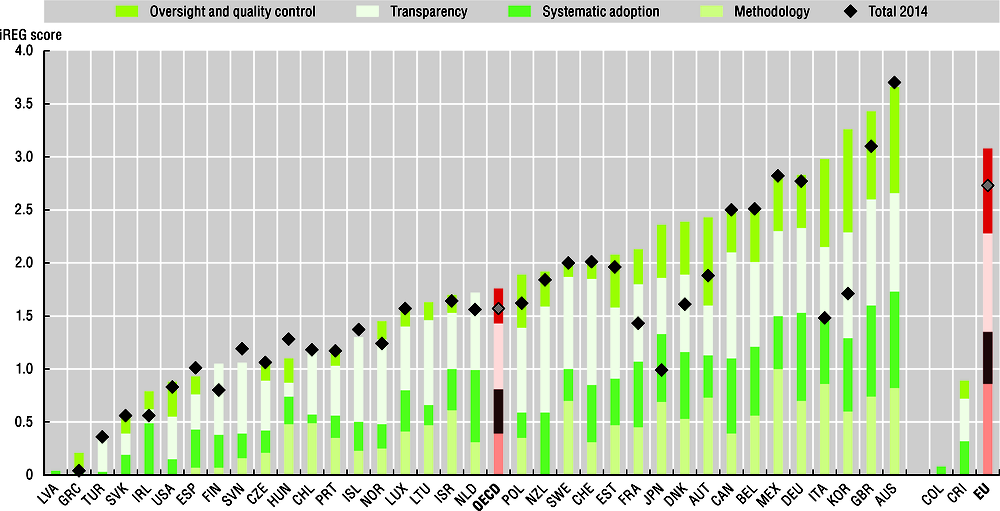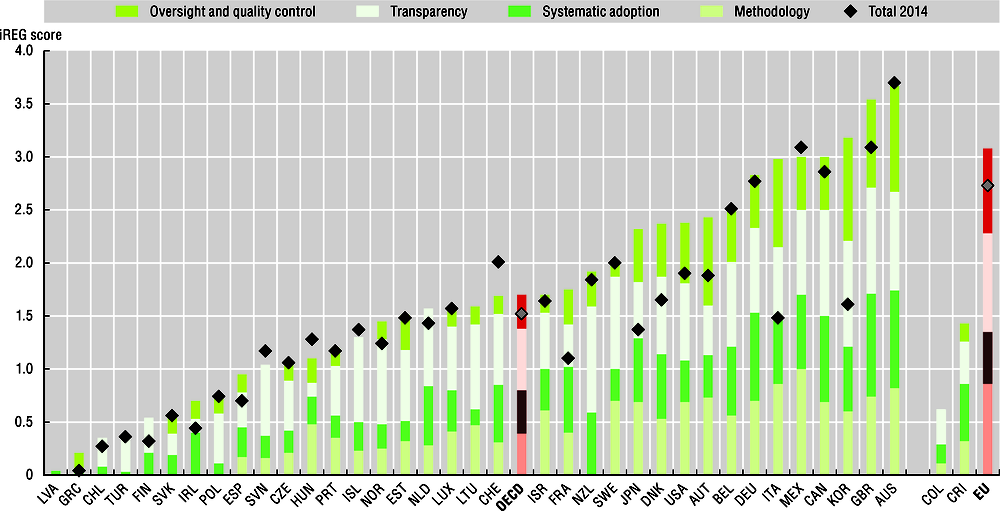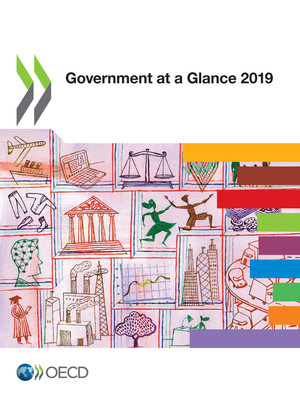copy the linklink copied! Ex post evaluation of regulation
Countries should regularly review their stock of existing regulations to ensure that regulations remain fit for purpose. Only after a regulation has been implemented in practice can governments assess its full effects, costs, benefits and unintended consequences. Given the rapid pace of societal change and technological advancement, even regulations that are fit for purpose may become outdated over time and increase unnecessary regulatory burden that complicates the life of citizens and the efficient operation of businesses. Ex post evaluations can provide important insights for improving the design of regulations and create a feedback loop into regulatory planning and the development of new regulations. They can also enhance trust in government by increasing the transparency and accountability of regulatory performance.
OECD countries still underinvest in ex post evaluation, leaving the regulatory policy lifecycle incomplete. Countries focus their better regulation efforts much more on the design of laws and regulations than their enforcement and evaluation. This picture looks largely similar for the ex post evaluation of primary laws and subordinate regulations. Australia and the United Kingdom have invested most in implementing the systematic adoption, methodology, transparency and oversight and quality control of ex post evaluations in line with the OECD Recommendation on Regulatory Policy and Governance. Other OECD countries, however, have not evaluated the effectiveness and fitness for purpose of their regulations in practice yet, including Greece and Turkey.
A majority of OECD countries still lacks a systematic approach to ex post evaluation, including broad requirements and a well-established methodology. As of 2017, only Austria, Germany, Italy, Korea and the United Kingdom report to have a systematic requirement to conduct ex post evaluations for primary laws and subordinate regulations and assess whether a regulation has achieved its goals when conducting ex post evaluations. Oversight and quality control of ex post evaluation is still the weakest area in most OECD countries despite some improvements in a few jurisdictions. In contrast, OECD country practices are most advanced in the area of transparency, i.e. if ex post evaluations are conducted, they are frequently made public.
Progress in the use of ex post evaluation has been marginal in most OECD countries over the past three years. Some individual countries have undertaken more substantive reforms of their ex post evaluation practices since 2014. The greatest improvements were made in the systematic adoption of ex post evaluation as well as in the area of oversight and quality control. For example, Austria, Japan and Spain introduced a criteria for identifying regulations for which ex post evaluations are mandatory. In Japan for instance, this criteria determines that, for regulations which are subject to ex ante impact assessment, an ex post evaluation has to be carried out. The Danish Business Forum for Better Regulation conducted in-depth reviews of the cumulative impact of the regulatory framework in different policy areas, including transport, digitization and the circular economy. Italy and Korea improved oversight of their ex post evaluation systems by preparing regular reports on the performance of their ex post evaluation systems.
The iREG indicator for ex post evaluation is based on the practices described in the 2012 OECD Recommendation on Regulatory Policy and Governance. The more of these practices a country has adopted, the higher its indicator score. The composite indicator is composed of four equally weighted categories: methodology gathers information on different assessments used in ex post evaluations; oversight and quality control records mechanisms to monitor the quality of ex post evaluations;systematic adoption records formal requirements and the use of different types of ex post evaluations; transparency records the openness of ex post evaluations. The maximum score for each category is 1, and the total score for the composite indicator ranges from 0 to 4.
The Indicators of Regulatory Policy and Governance (iREG) draw upon responses provided by delegates to the OECD Regulatory Policy Committee and central government officials to the 2017 and 2014 OECD Indicators of Regulatory Policy and Governance Survey for 38 OECD member and accession countries and the European Union. More information on the iREG indicators can be found in Annex E and at oe.cd/ireg.
Primary laws are regulations that must be approved by the legislature, while subordinate regulations can be approved by the head of government, an individual minister or the cabinet.
Further reading
OECD (forthcoming), OECD Best Practice Principles for Regulatory Policy: Reviewing the Stock of Regulation, OECD Publishing, Paris.
OECD (2018), OECD Regulatory Policy Outlook 2018, OECD Publishing, Paris, https://doi.org/10.1787/9789264303072-en.
OECD (2012), Recommendation of the Council on Regulatory Policy and Governance, https://legalinstruments.oecd.org/en/instruments/OECD-LEGAL-0390.
Figure notes
On data for Israel, see https://doi.org/10.1787/888932315602. Data for Latvia, Lithuania, Colombia and Costa Rica are not available for 2014.
Metadata, Legal and Rights
https://doi.org/10.1787/8ccf5c38-en
© OECD 2019
The use of this work, whether digital or print, is governed by the Terms and Conditions to be found at http://www.oecd.org/termsandconditions.




